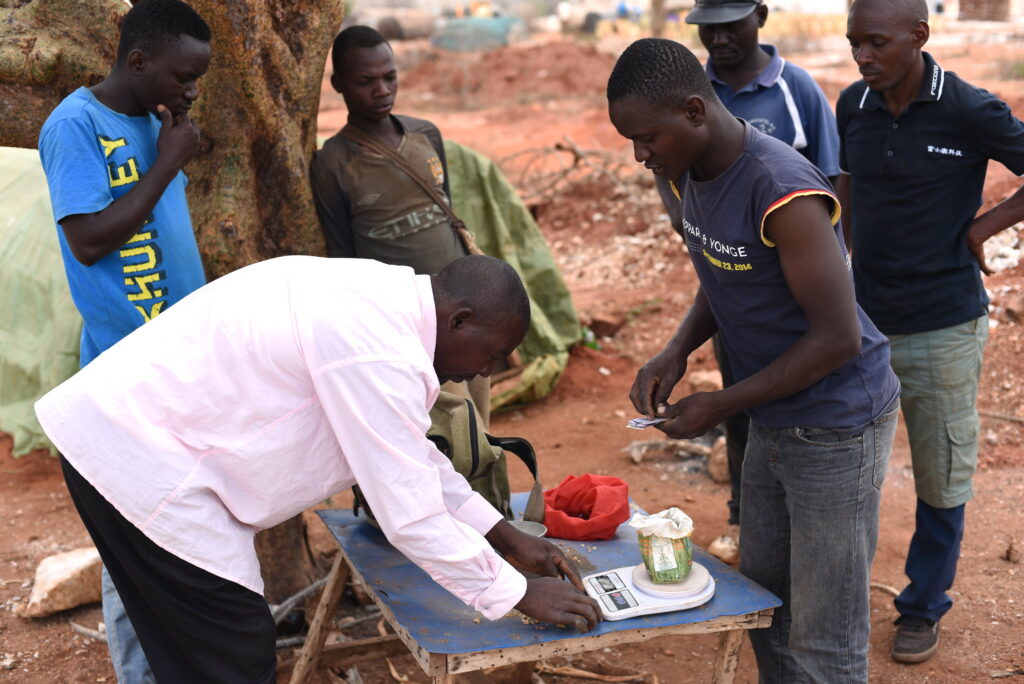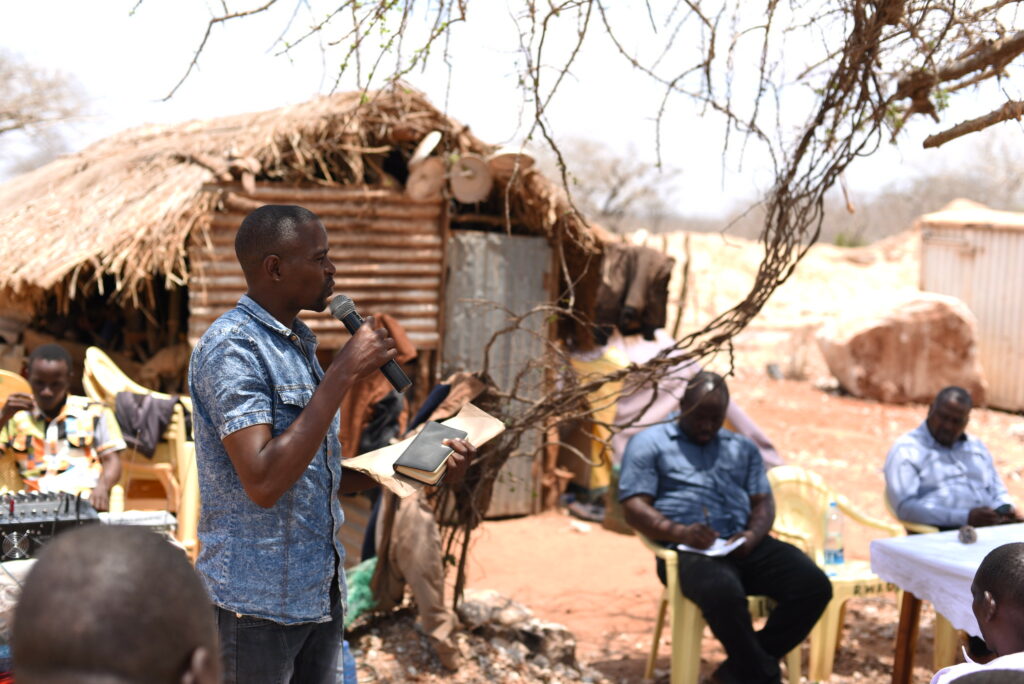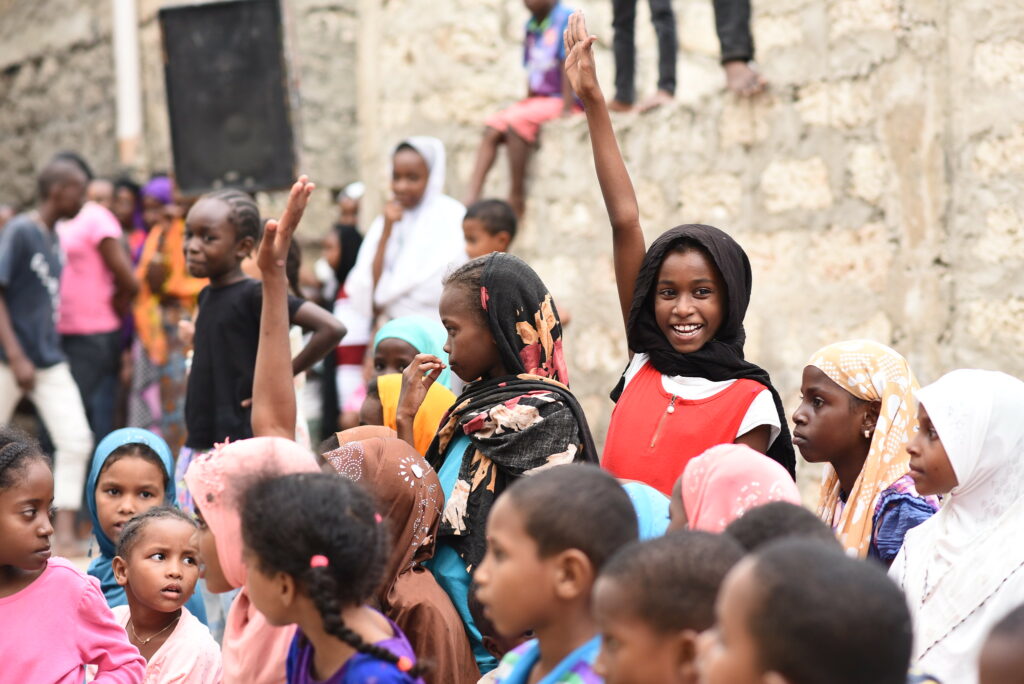Engagement with ASM's
In June 2020, we initiated projects with ASM communities in Taita Taveta, Kakamega, and Migori, aiming to gather citizen-generated data to inform policy decisions and enhance miners’ agency. Utilizing networks, we mapped registered ASM groups and conducted key informant interviews to understand dynamics and priorities. We then engaged individual miners to assess the COVID-19 impact and enlisted community monitors to digitize monitoring data for ongoing evaluation.
Jonah in a ASM meeting in Kasighau Ranch, Taita Taveta
Methodology
We commenced working with ASM communities in Taita Taveta, Kakamega and Migori in June of 2020. We focused on collecting citizen-generated data to build knowledge on their work status, needs, priorities, and focus points. We hypothesized that organised citizens, using data, are in a better position to contribute to shaping mining policy decisions and strengthening their agency in advocating for good practices with key stakeholders. Further, there is great potential to improve the livelihoods of miners and help eliminate poverty.
To begin with, we leveraged our networks in the Counties, engaging them to map out the existing registered ASM groups. In other words, the sampling was purposive with an aim to understand issues through key informant interviews. We further engaged the chairpersons of those ASM groups to understand their dynamics, challenges, issues and priorities.
Further, we also wanted to showcase and map who and where the ASMs are intending to develop a database (the very first time this has been done). This was intended to bring about visibility to the needs and priorities of small scale miners using data and evidence.
The next phase for the mapping exercise was an in-depth conversation with the individual miners to grasp the impact of COVID-19 on their livelihoods and that of their dependents. To improve the quality of data, we identified fifteen community monitors in each county who were keen on monitoring the impact of COVID-19 on ASMs. The community monitors task was to provide regular updates of the challenges faced as a result of the pandemic through the Nuru platform by digitizing community monitoring data through written reports, voice notes, videos and photos.
In September and October of 2021, we reconnected with the same community monitors to collect fresh data. This round was focused on re-examining the impact of COVID-19 on ASM’s one year down the line. Of importance were some of the measures communities had taken to recover and build their resilience.
Results from data collection in the counties in 2020/2021
The mapping exercise revealed the average age of the miners were youth aged about 35 years old. The interviews, as well as sites, visited revealed that ASM’s are dominated by men, with women making up just a small percentage. Further engagements with some of the chairpersons revealed that underage children were working at the mines, this was largely attributed to schools being closed, children having smaller body frames making it easier for them to get through smaller shafts, families having extra mouths to feed, the reduced numbers and shifts at the mine site and the need to earn an income at the end of the day.
In the Counties of Taita Taveta, Migori and Kakamega, we got to engage ASMs who were organised into groups that had structures in place usually consisting of chairpersons, secretaries and treasurers.
Age Distribution

The mapping exercise revealed the average age of the miners were youth aged about 35 years old. The interviews, as well as sites, visited revealed that ASM’s are dominated by men, with women making up just a small percentage.
Further engagements with some of the chairpersons revealed that underage children were working at the mines, this was largely attributed to schools being closed, children having smaller body frames making it easier for them to get through smaller shafts, families having extra mouths to feed, the reduced numbers and shifts at the mine site and the need to earn an income at the end of the day.
In the Counties of Taita Taveta, Migori and Kakamega, we got to engage ASMs who were organised into groups that had structures in place usually consisting of chairpersons, secretaries and treasurers.
Registration Groups

The officials of the mining groups were democratically elected from their members. They maintained a register of their members even though some of them worked on more than one site. Many of the miners were engaged in other businesses.
The mapping exercise revealed that there were several groups across the three counties, most of which were registered. However, only one group (from all of those interviewed) had a mining permit. Further discussions with ASMs revealed that the ASM groups were keen on formalising their activities and ensuring that, collectively, they were able to make a living for themselves and their dependents.
Level of education

Respondents (from the groups) confirmed that the majority of ASM’s comprise individuals who have at least received basic education ( that is up to secondary school). This was then followed by undergraduates at 19.6% who attributed their work at the mines to failure in securing gainful formal employment. One respondent, also an ASM, had obtained PhD (doctorate) level education.
Access to Machinery
84.3% of respondents do not have access to machinery. Only 11% have access to leased machinery and only 3.9% have their own machinery. To ASM’s, the lack of machinery means low production at the end of the day at the mine site. This translates to low or no daily income. The situation remains unchanged in 2021 and so provides an opportunity for stakeholders to make such investments
Migration within mines
Members of mining groups ordinarily mostly remained on one site and were not migratory. But 40% of the respondents confirmed that they were migratory but this was also dependent on the productivity of mines. There were cases of miners who had come from other counties to work at these mine sites (including some from neighbouring countries such as Tanzania) to work in gold mines in Western Kenya.
Many ASM groups expressed the challenges they had faced in obtaining mining permits – attributing this to bureaucracy at the Ministry.
ASM groups also revealed that they wanted the government to not just remove red tape but provide some incentives when it comes to the formalisation process.
As a note here, many of the ASM groups have created internal governance structures, and expressed willingness to engage not just with the government but also other stakeholders to improve their working conditions.
Infrastructure at the mines
In Western Kenya, there’s fairly good access to mine sites via the existing road networks, In Taita-Taveta however, it depends on the location of mines and some remote areas have extremely poor road access to the mine sites. Telephone masts in Western Kenya have made sure mobile networks are available. But in Taita-Taveta, the mobile networks (all leading mobile network operators) availability is poor and unavailable at some sites. Generally in Western Kenya and Taita-Taveta, there was a problem of accessing banking facilities outside major towns. The situation remained unchanged by October 2021.
Consequently, there is room for mobile service providers and the Communications Authority of Kenya to expand services to these remote areas. With such infrastructure comes opportunities to use mobile money services, grow financial literacy and encourage saving. Mobile service providers through partnerships with various groups can also introduce digital health care services.
Adverse Weather Conditions
From May to July 2020, Kenya was experiencing heavy rains; the meteorological department cautioned that there would be heavy rainfall in parts of the Western, Central and Coastal regions. Miners in Kakamega and Taita-Taveta revealed that heavy rains affected their work by slowing the daily output. In 2021 however, this was not reported.
Covid 19 Awareness
In June 2020, all ASM groups interviewed confirmed that their members were aware of the pandemic. 94% of them had taken health and safety measures at the mine sites. Such measures included: reduction of numbers of miners, wearing face masks and maintaining hand washing facilities at the site.
The requirement of face masks however did not work for ASMs carrying out excavation operations miles underground as the air there is thin. Further, in Taita Taveta, there were challenges with respect to access to water and soap. One year later in October 2021, 77.6% of respondents reported that they were adhering to the same safety measures. 100% of the respondents had adequate information and knew how to report cases of COVID-19 detected and the measures to take. Further, only 26.5% of the respondents indicated that there was a stigma associated with COVID-19 when it comes to working at the sites.
Reduction of ASM’s at sites affected productivity as well as reduced the income earned. In some cases like in Kakamega, there was a rise in the crime rates. In Taita-Taveta, in June 2020, mining operations for a majority of ASM’s came to a halt.
However, one year later, 52.9% of the respondents reported thoughts of wanting to change or leave mining work due to COVID-19. Many of the ASM’s reported that despite the obstacles, the work remained lucrative enough as a source of livelihood for them, their families and their communities.
